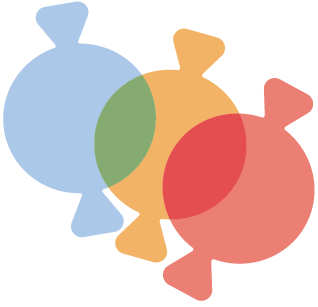Occupational Therapy Month: Enhancing Access, Engagement, and Inclusion
April is Occupational Therapy (OT) Month - a time to recognize and celebrate the impact of occupational therapy on individuals' lives. AAC plays a vital role in empowering individuals with communication challenges, enabling them to express themselves, engage with their environment, and lead fulfilling lives.
Occupational therapy is a holistic healthcare profession focused on helping people across the lifespan participate in the activities they want and need to do in daily living while enhancing their well-being, health, and engagement in life activities (American Occupational Therapy Association, n.d.).
- While this may encompass various tools and interventions, AAC stands out as a crucial tool, especially for those with speech and language impairments.
Occupational therapy and AAC are deeply intertwined:
- Facilitating Communication: For individuals with conditions such as autism spectrum disorder, cerebral palsy, or aphasia, AAC bridges the gap between their thoughts and their ability to express themselves via speech. Occupational therapists work closely with clients to assess their communication needs and tailor AAC solutions to their unique skills.
- Promoting Independence: AAC empowers individuals to advocate for their needs, express preferences, and engage in social interactions independently. By proficiently using AAC devices to communicate, individuals gain greater control over their environment, fostering autonomy and self-determination.
- Enhancing Participation: Meaningful engagement in activities is central to occupational therapy. AAC facilitates participation in educational settings, social gatherings, work environments, and leisure activities by providing individuals with a means to communicate effectively and interact with others.
- Supporting Skill Development: AAC is not only a tool to compensate for unintelligible speech, but it also contributes to skill development in areas such as literacy, language, and cognitive abilities. Occupational therapists employ AAC strategies to scaffold learning and expand functional communication skills over time.
- Improving Quality of Life: The ability to communicate effectively is essential for maintaining social connections, accessing resources, and fulfilling one's aspirations. By integrating AAC into occupational therapy interventions, individuals with complex communication needs are enabled to cultivate meaningful relationships, pursue personal goals, and experience a higher overall quality of life.
Occupational therapists are uniquely positioned to play a significant role in AAC assessment and implementation due to their holistic approach to addressing individuals' functional needs and promoting participation in daily activities.
Occupational therapists bring a holistic perspective to AAC assessment and implementation, considering not only the communication device itself but also the surrounding environmental factors that can significantly impact communication success.
Occupational therapists are involved in various aspects of the AAC assessment and implementation process:
- Comprehensive Assessment: Occupational therapists assist to conduct thorough assessments to evaluate clients' sensory-motor skills, cognitive functioning, and environmental factors influencing communication.
- They collaborate with clients, families, and other healthcare professionals, especially the evaluating clinician, to gather information about communication preferences, goals, and environmental contexts.
- AAC Device Selection: Based on assessment findings and client-centered goals, OTs help guide the selection of AAC tools that best match the individuals' needs, preferences, and abilities.
- They consider factors such as vocabulary grid and button size, portability, and durability to ensure optimal usability and effectiveness in various environments.
- Positioning for Access: OTs collaborate with clients to identify the most functional and comfortable positioning for accessing AAC devices.
- They consider individual preferences, sensory needs, and motor abilities when determining optimal access methods, whether through direct touch, switch scanning, head pointing, or eye gaze. OTs assess factors such as trunk control, head control, upper extremity positioning, and lower extremity support to determine the most appropriate seating system during AAC use.
- Customized Seating Solutions: Based on assessment findings, OTs recommend customized seating solutions to support clients' positioning needs and optimize AAC device access.
- This may involve identifying and obtaining specialized seating cushions, backrests, headrests, arm supports, and mounting systems tailored to the individual’s body and functional skills.
- Integration of AAC into Seating Systems: OTs work closely with assistive technology specialists and seating vendors to seamlessly integrate AAC devices into individuals’ seating systems.
- They ensure that mounting systems are adjusted, secured, and positioned within easy reach for optimal AAC device access without compromising postural support, positioning, and comfort.
- Training and Education: OTs provide training and education to individuals with complex communication needs, their families, caregivers, and support staff on proper positioning techniques and maintenance strategies to promote safe and effective AAC use.
- They emphasize the importance of maintaining optimal seating and positioning throughout daily activities to maximize engagement.
- Environmental Considerations: OTs assess and address environmental barriers that may impact AAC access in various settings.
- They advocate for environmental modifications such as accessible seating arrangements, adjustable work surfaces, and ergonomic furniture and AAC device accessories to facilitate participation in educational, vocational, and community activities of those with complex communication needs.
Occupational therapists collaborate with transdisciplinary teams, including speech-language pathologists, educators, family members, caregivers. rehabilitation engineers, and assistive technology specialists, to ensure coordinated AAC services and support. They advocate for clients' rights to access AAC resources, AAC device funding, and inclusive educational, vocational, and community opportunities.
Occupational therapists play a critical role in empowering individuals with complex communication needs to achieve their full potential and participate meaningfully in society. Occupational Therapy Month is a wonderful opportunity to recognize and celebrate the invaluable role occupational therapists have in enhancing accessibility, inclusion, and communication equity for all.
References
American Occupational Therapy Association. (n.d.). What is occupational therapy?. American Occupational Therapy Association. https://www.aota.org/about/what-is-ot
